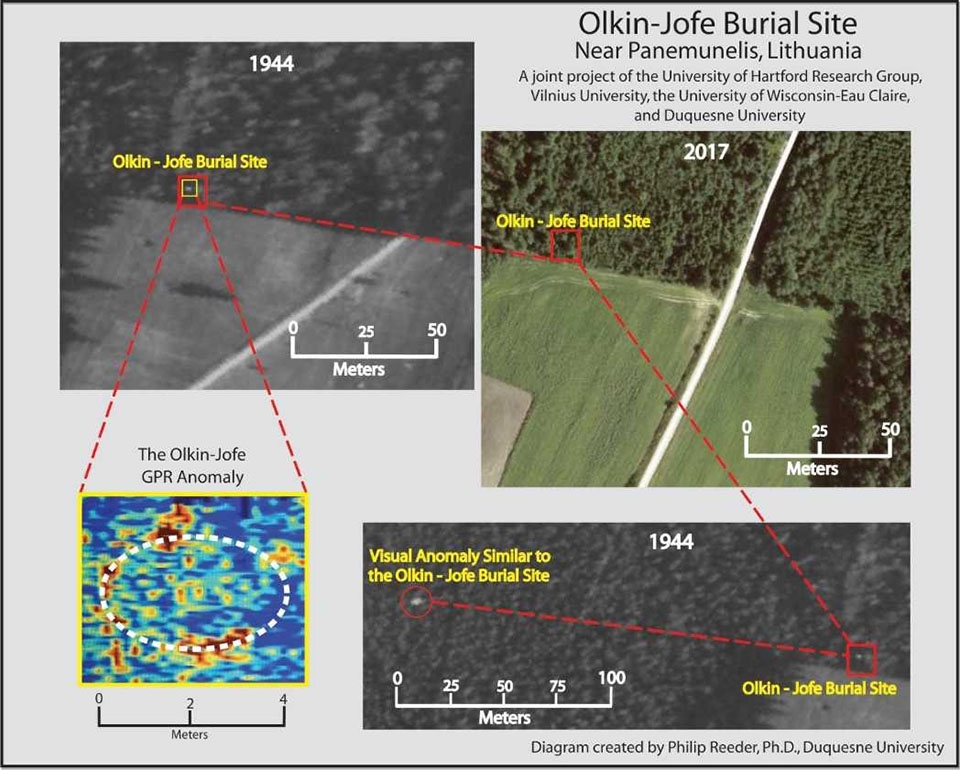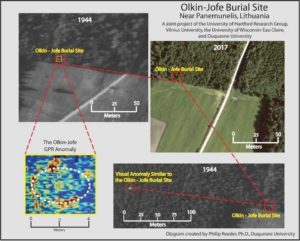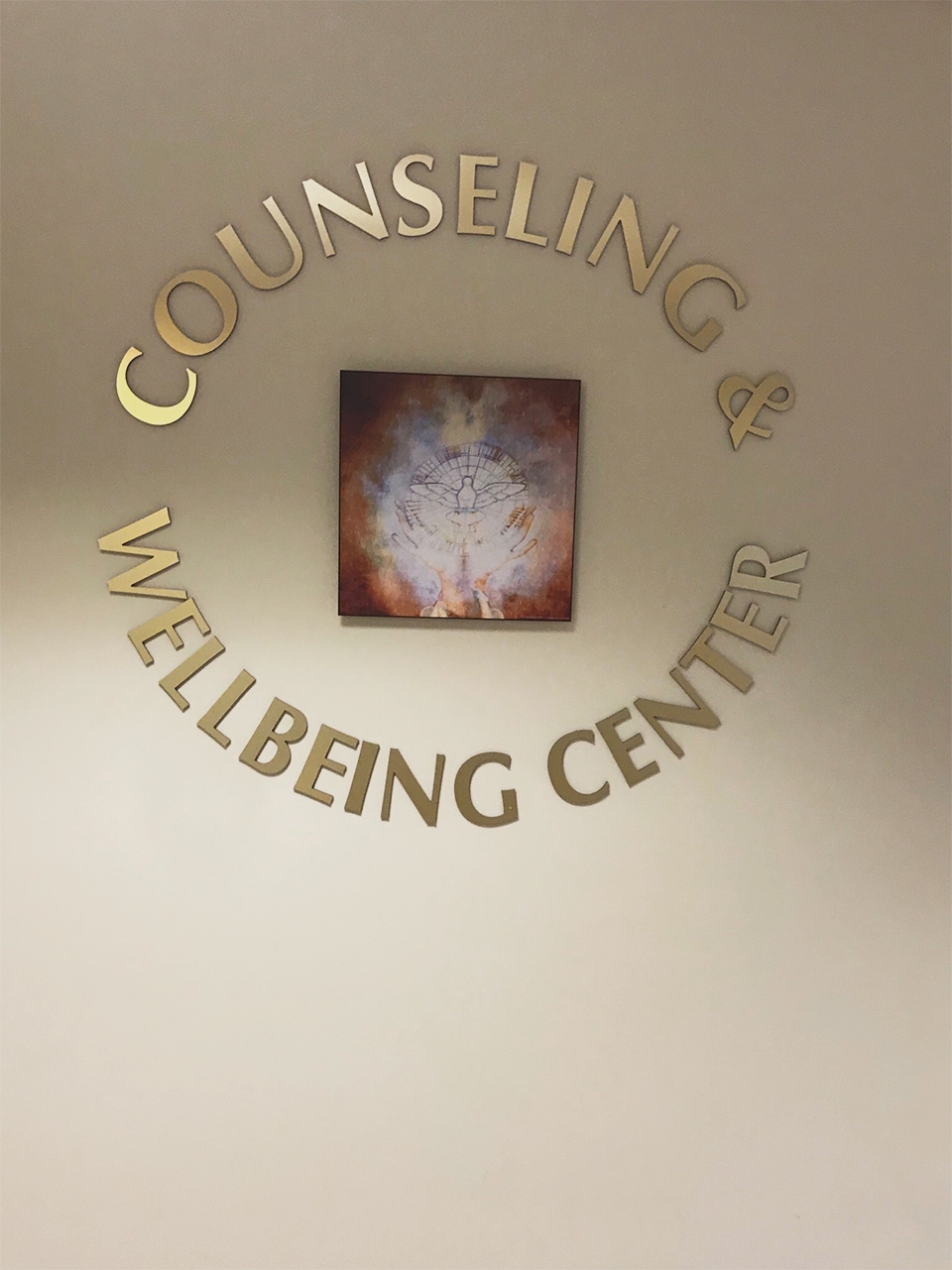

Using ground-penetrating radar, Philip Reeder and his colleagues were able to locate and discover the grave sites of the Olkin and Jofe families in Lithuania.
Raymond Arke | Editor-in-chief
08/30/18
History can often stay buried. However, one Duquesne professor is helping uncover the past surrounding one of history’s darkest moments. From July 11 to 24, Philip Reeder, dean of the Bayer School of Natural and Environmental Sciences, was part of a research group that discovered the grave site of the so-called “Anne Frank of Lithuania,” Matilda Olkin.
Reeder got involved in the project to locate Olkin’s grave through a research group that he has worked with before.
“I have been part of a research group comprised of geophysicists, historians, geographers, geologists, and archaeologists and we have been working on various projects around the world to use
science to write and rewrite history,” he said. “Many of the projects have involved sites in Israel that are mentioned in the Bible. Over the past ten years we have been working at sites related to the Holocaust as well.”
Olkin was a Lithuanian Jew and a college freshman at Vilnius University in 1941 when Nazi Germany invaded the country.
According to Reeder, as the Nazis began to gather up Jews and place them in guarded neighborhoods called ghettos, Olkin left Vilnius and went back to her home to be with her family near Rokiskis. When she got to her village, the Jews were already being removed from their homes and made to stay in her town’s train station.
Reeder explained that Olkin was a poetry major in college and was known as a “very good poet.”
She also wrote stories and kept a detailed diary. As Jews were being rounded up, she did not want her writings taken, Reeder said.
“She gave [the writings] to the priest at the church in her town. The priest hid her writings under the altar in the church and they stayed there for over 50 years forgotten,” he said. Olkin did not survive the war. Reeder said she and her family were murdered by the Nazis in either April or May 1941.
When her documents were eventually discovered years later, they “gave a unique insight into the Holocaust through the eyes of a college freshman,” Reeder said.
Much like Anne Frank, Olkin provided the unique perspective of a young girl watching the Holocaust happen, Reeder said. He also pointed out that their fates were similar, with each girl and their family being put to death.
This project had three main components; to find Olkin and her family’s grave, locating a mass Jewish grave from the Holocaust near Trakas and to excavate the ruins of the Great Synagogue of Vilnius to find the corners of the old synagogue which was destroyed by Russians in the 1950s, Reeder said.
He added that they also wanted to locate the bimah, “the place in the synagogue where the Torah, the holy book of the Jewish religion, was kept,” in the Great Synagogue of Vilnius.
Reeder said the group spent the first week of the project in Vilnius, Lithuania where they did research and excavation at the Great Synagogue. The other two weeks were spent near Rokiskis, Lithuania, where Olkin and her family were buried. There they searched for the Olkin-Jofe burial site, named for the two families buried there and at the Trakas mass burial site.
The research team knew roughly where the Olkin burial site was thanks to an eyewitness account.
“We had a general idea where to look because, in 1941, where the family was murdered, a six year old girl watched the execution from a nearby farm. This girl, all grown up, gave an interview in 1994 about what happened,” Reeder said. “As part of this interview she drew a memory map of where the events took place. We used that map and ground penetrating radar to find and pinpoint the spot.”
Also in the area, Reeder and the team discovered a mass grave.
“Working in the area around Rokiskis we also discovered the mass burial at Trakas. We had an idea where to look based upon some writings that were found in an archive. The mass burial, which contains murdered Jews from the surrounding area is estimated to contain the remains of 60-80 people,” he said.
Reeder stressed the importance of science in aiding to the discovery of the graves.
“It is important proof that science can be used to write and rewrite history. Without using ground penetrating radar, the site of the Olkin-Jofe burial would have never been discovered,” he said.
Finding these graves adds to the crucial task of remembering the horrors of the Holocaust.
“The discovery is also important to a very turbulent part of history in Lithuania and much of Europe, namely the Holocaust, where over 8 million Jews were murdered,” Reeder said. “The Jewish population of Lithuania was nearly wiped out during the Holocaust, and to uncover this location will allow this important site where a young girl and her family are buried to be properly memorialized. This project and the result can also provide the impetus for more locations we discover to be memorialized.”
The research team that discovered Olkin’s grave consisted of Reeder, Professor Harry Jol and five students from the University of Wisconsin-Eau Claire, Richard Freund, the director of the Maurice Greenberg Center for Judaic Studies at the University of Hartford and Susan Cardillo, a film studies professor at the University of Hartford.
Reeder was in change of mapping, cartography and spatial analysis. “[Jol] is an expert in ground penetrating radar, which is a technology that lets you see what is in the subsurface without digging,” Reeder said. Freund is a historian, archaeologist and Jewish rabbi. Cardillo and two students from the University of Hartford made a documentary of the project.
Reeder said the project will be featured in the November 2018 issue of Smithsonian Magazine.





1 Trackback / Pingback
Comments are closed.